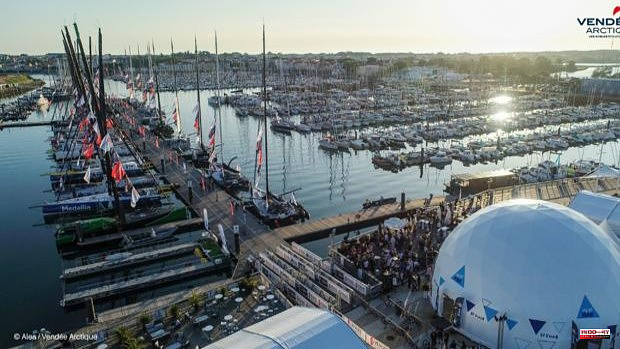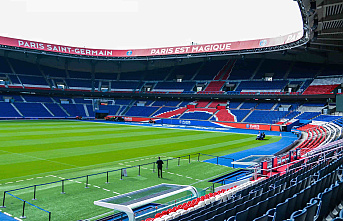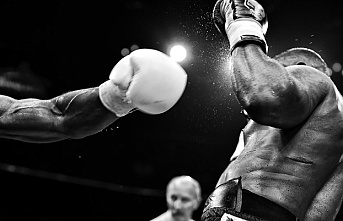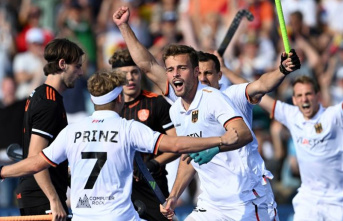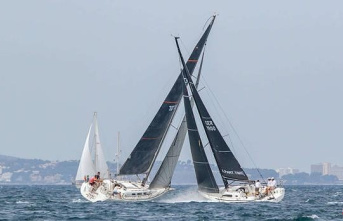Second edition of the Vendée Arctique with start and finish in the port of Les Sables d'Olonne, turning around Iceland in the North Atlantic and a crossing point on the parallel 45° North and the meridian 30° West. Regatta attended in this year 2022 by twenty-five solo sailors aboard the OPEN 60 IMOCA, and which scores as a qualifying round for the next solo round-the-world trip without stopovers or external help Vendée Globe.
In the 2020 edition the fleet would not come around Iceland, they had a waypoint further south of this island 62° North / 25° West (IOC Unesco Waypoint), about 130 miles southwest of this island, and a second point at 46° 20´ North / 15° West, completing a total of 2,855 miles.
From the first miles the trio formed by Thomas Ruyant, «LinkedOut», Charlie Dalin, «Apivia», and Jérémie Beyou, «Charal», were the ones who set the pace of the regatta. In the southeast of Ireland they already had a slight advantage over the other solitary, only Kévin Escoffier was following them aboard the «PRB» about 4.8 miles from the first; the fourth «Sea Explorer» at more than 10 miles and the tenth IMOCA «Banque Populaire X» of Clarisse Crémer at more than 38 miles. A dispute that differentiated between those IMOCAs with “foils” in their origin and those OPEN 60 that had incorporated them for the Vendée Globe 2020-2021.
The 887-mile ascent to the northernmost end of the route was a hand in hand between Ruyant, Dalin and Beyou, with Samantha Davies trailing by now at 17.8 miles on Initiatives-Coeur; fifth Boris Herman with the «Sea Explorer» at 20.3 miles, sixth Kévin Escoffier at 21.2 miles in the «PRB» and seventh Isabelle Joschke at 26.3 miles with the «MACSF».
After four days and twenty hours the first rounded the first waypoint with Thomas Ruyant, «LinkedOut», in the lead; beginning a rapid descent towards the second waypoint. The fleet gained longitude west to negotiate the passage of low pressure coming from the west, which trapped the tail formed by Arnaud Boissieres's "La Mie Câline – Artisans Artipôle", Manuel Cousin's "Groupe SÉTIN", Miranda Merron's "Campagne de France" and Clément Giraud's "Vers Un Monde Sans Sida" ranked 14th, 15th, 16th and 17th respectively.
320 miles from the second pass (Gallimard Waypoint), «Apivia» was placed in the first position, very marked by the «Charal» that would turn after 8 days 18 hours and 23:28 minutes. And 270 miles from the finish line, Jérémie Beyou gave the blow with the “Charal” that Thomas Ruyant and Charlie Dalin could do little to unseat him from the first position.
Jérémie Beyou wins the first edition of the Vendée Arctique with a record of 10 days 05 hours 14 minutes and 08 seconds. Second place went to Charlie Dalin less than an hour apart (10d 06h 04min 12s) and third place went to Thomas Ruyant, 20 minutes behind second (10d 06h 24min 12s). Just over half an hour remained to Ruyant, in fourth position Sam Davies (10d 06h 58min 55s); and fifth place went to Kévin Escoffier less than three hours behind the winner and one hour behind Davies (10d 07h 54min 34s).
In this second edition of the Vendée Arctique we will see new faces and some who attended the previous edition will not be present. The regatta has become more international with skippers from France, England, Italy, Japan, the United States, Hungary, Belgium, New Zealand, Germany and Switzerland.
Nicolas Luneven replaces Clarisse Crémer on board the Banque Populaire as she is pregnant. Lunven has a long history as a “figarista”, he won La Solitaire du Figaro in 2017, he was second with Kévin Escoffier in the 2019 Transat Jacques Vabre and this 2022 season he has achieved a fourth place in the Guyader Bermudes Race with the «Banque Populaire », being the first IMOCA with lateral drifts, without “foils”.
Sam Davies will not be there, his new IMOCA “Initiatives-Coeur” is not yet finished. OPEN 60 that has been built on the same mold as the old Armel Tripon boat designed by Samd Manuard. Nor Kévin Escoffier who finds himself in the same situation with his new «PRB» recently put in the water.
The weather forecast will be in the hands of Christian Dumard, who describes it as intense work for the solo sailors aboard the IMOCAs to be able to determine the path to follow in each of the sections of the route between Les Sables d'Olonne and Iceland and the turn.
From Les Sables d'Olonne to Fastnet. "Anything can happen. In the first edition, 35 knots swept the route to Fastnet. There was 60 knots in the middle of summer during the terrible Fastnet race of 1979, which decimated the fleet... The tricky thing is that there is no room to play with the systems between the tip of Brittany and the mythical Irish lighthouse, which you have to leave to starboard. So you play with what you have, you have to endure both calm and bad weather, depending on what happens. The Celtic Sea can be bad ”.
Northward. "In the great stretch of water that leads to Iceland, there is a corridor where casualties from Newfoundland and the United States pass through. They are pushed north and move to the west or east of Iceland. You have to cross these low pressure lanes and choosing the best time to cross. The complexity comes from the fact that they move quite fast, which requires a lot of vigilance. This means that gaps can quickly appear or, on the contrary, that groupings can occur. Two boats separated by thirty miles may not have the same conditions, since one plays with the system and the other does not.It will be a lot of fun for the fans of the regatta, it promises a lot of work on board, with regular manoeuvres, sail changes and a lot of rig work. navigation (route-finding). Going to Iceland is demanding, leaving Iceland is demanding, and there will be work to do until we return to the latitudes of Brittany. Even if the lows are not very deep, they will make the cond tions are never the same. The patrons will be attentive, as if it were a great stage of the Solitaire du Figaro”.
Ice? "In principle, if you stay close to the northwestern tip of Iceland - the closest to Greenland - you won't see any ice: it's 30 to 60 miles further west. Ice actually descends along Greenland. Packed ice (frozen water ) along Greenland breaks up at this time of year, and some icebergs (from glaciers) can also float down the cold current that runs through Greenland and from north to south. Here the water is cold, around 0°. In On the other hand, the water in Iceland is between 8 and 10 degrees in July. Where they meet, small gyres are formed, rotational movements because waters of different temperatures have difficulty mixing. These areas favor the presence of various nutrients and, therefore, the presence of marine fauna. But it is far from the passage of ships."
Within the program of activities prior to the start of the Vendée Arctique, this Sunday, June 5, some speed tests were held with guests among the participating boats. In sequences between 3 and 5 minutes, the OPEN 60 sailed in a straight line in order to reach maximum speed. The winner was Charlie Dalin with the «Apivia» followed by Jérémie Beyou, «Charal», and Damien Seguin in the «Groupe Apicil».
Charlie Dalin, the winner of the day, relativizes his performance: "We cannot compare today's tests with what awaits us. The objective of the day was to put on a show and please our guests. There were beautiful figures from all the competitors" .
“I am super happy”, enthused Damien Seguin. “We were lucky to have good runs with sun and a bit of wind. We take the boat in hand. We fill ourselves with confidence, I am starting to get to know the boat well. Even with small foils , we managed to survive, and the guests were super happy."
The serious part begins on June 12 at 5:00 p.m., with the fleet leaving for the sea from the pontoons at 1:00 p.m.

